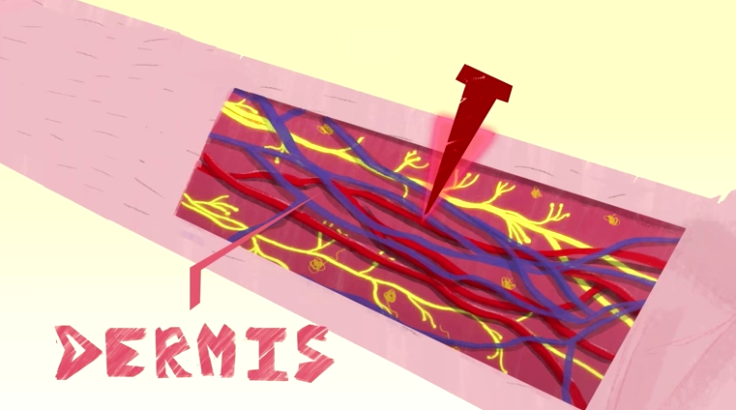The 4-Stage Process Of Wound Healing: Making Skin Stronger Than Before

What’s the largest organ in your body? As a kid that might have gotten you; it’s your skin, which serves as a layer of protection between your inner tissues and the outside world.
Because of its protective function, your skin must have an action plan for healing itself when you get hurt, no matter if it's scratched, bruised, or wounded. The body’s self-healing properties are fascinatingly harmonious and rather beautiful, as the video below depicts. Various cells and mechanisms work together as though forming a puzzle, rebuilding your layers of skin.
When the top layer — the epidermis — is broken by a light scratch, not much occurs. You might see some dead skin cells flake off. But when something cuts into the deeper, next layer — called the dermis — you’ll see blood, and your body triggers a four-stage process of healing itself. The skin has to respond to two major threats at first: the loss of blood, and the lack of a physical barrier (the epidermis) between your innards and the outer world. An open cut is an open doorway to bacteria and other pathogens, far more vulnerable to infection, so the body must act quickly to regenerate the epidermis.
First, red blood cells form a blood clot, which helps stop the bleeding and creates a temporary barrier that prevents pathogens from getting into the open wound. A few hours later, your skin might turn red and look swollen. This is the inflammation phase, when the body sends white blood cells to capture and fight off any rogue bacteria that happened to get through. Next, fibroblast cells enter the wound, dropping off collagen, which forms connective skin tissue to replace what was there before. The dermis and epidermis, then connect and contract to close the wound. After this full process, the skin is likely to be much stronger than it was before the wound. To see the entire process, watch the video below.



























